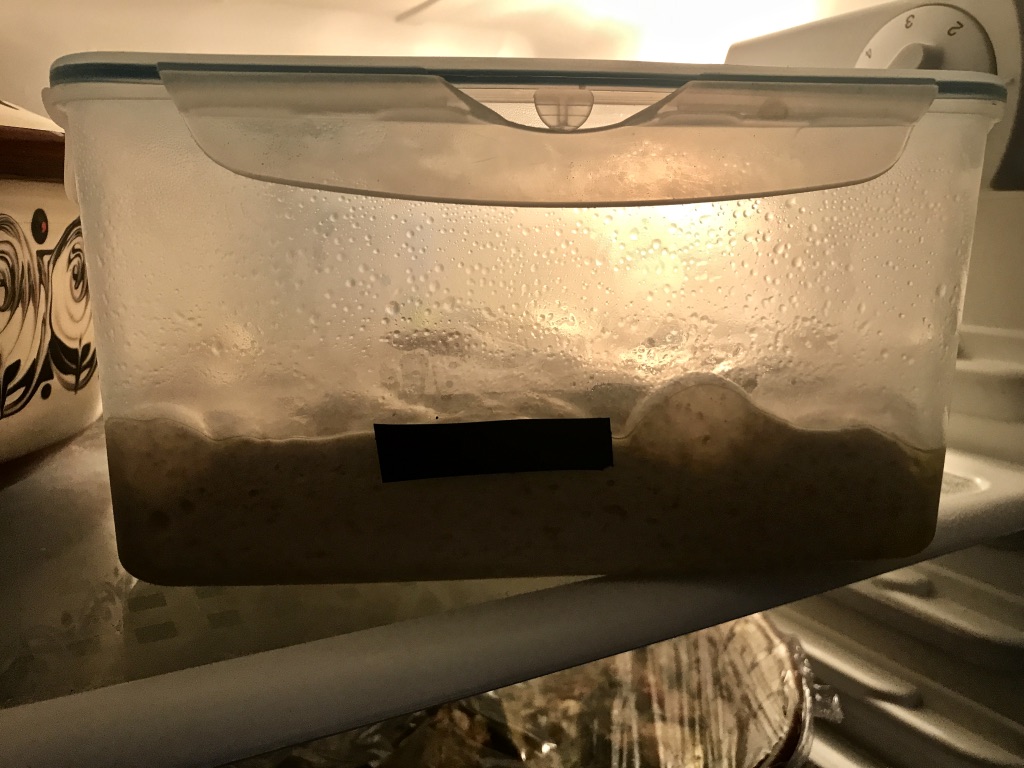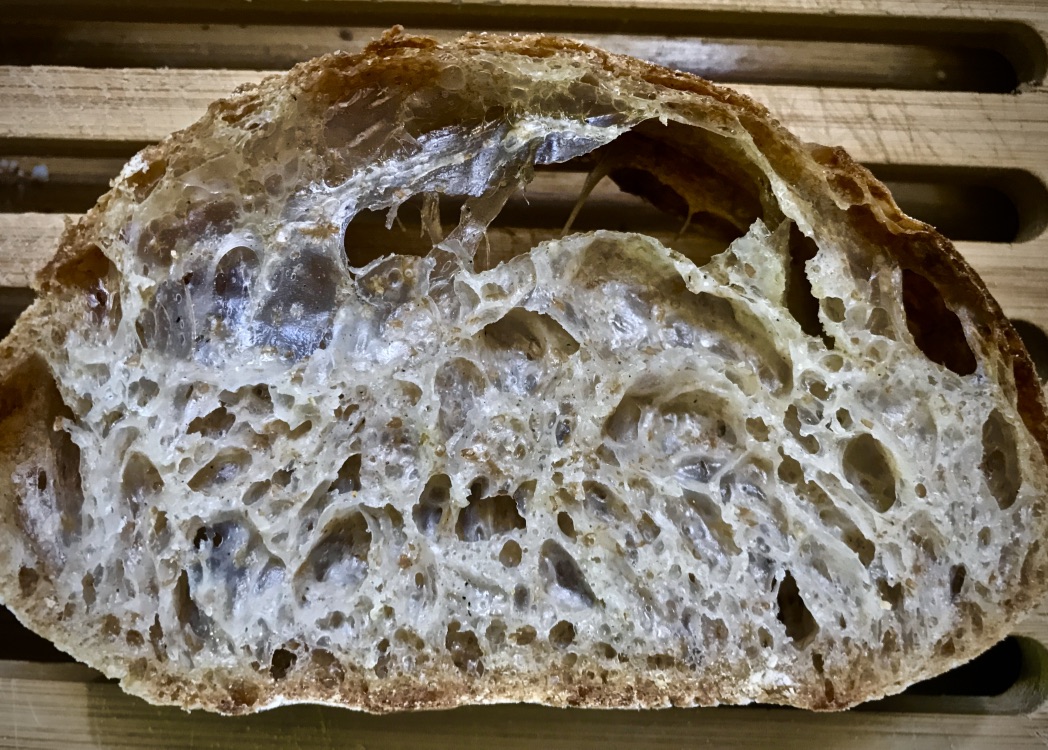Many people wanted to get details how to make the bread with translucent alveoli walls which I have published in the community bake 50% wholewheat thread. So I promised to make notes about the process. However, this bread was not made with sourdough starter but rather with tomato and basil yeast water.
For those who don't like to read too much here are the major differences to what most of people usually do:
1.) Longer autolyse (this time 4 hours) at room temperature
2.) Extended bulk fermentation in the fridge for 18 hours
3.) Bread was shaped as ciabatta.
4.) There was almost no final proofing - just time needed to warm up the oven
5.) Staring baking temperature was 500 dF (260 dC).

This are by my opinion the differences which are not common in most recipes or traditional procedures.
The reason for 4 hour long autolyse is giving more extensibility to the dough caused by enzymatic activity of protease. Second reason is to hydrate well the bran particles so they will have less sharp edges and will not cut the gluten network so much.
I made this bread only from 300g of flour mixture with 50% of whole-grain wheat flour and 50% of type 500 white bread flour with unknown protein content but estimated to be between 11 and 12%. Definitely with significantly smaller protein content than American or Canadian flours. The plan was to shape it as ciabatta.

The process is as follows:
1.) Two stage levain build: first stage with 50g of white flour T500 and 50g of yeast water. When doubled add 50g of whole-grain wheat flour and 50g of water (better if you use here yeast water again). The levain build will take about 5-8 hours.
2.) Mix whole-grain wheat flour and white wheat flour type 500 with 70% of water (70% of weight of flour for the main dough) and let it rest for 4 hours at room temperature.
3.) Mix levain and alutolysed flour with hand and develop gluten by using scoop & stretch method (rhubaud method of mixing). This usually takes about 2-4 minutes and as result you get a cohesive dough. Let the dough rest for about 20-30 minutes.
4.) Add 2% of salt and additional 5% of water (if necessary) in my case this was 15g. Incorporate the salt and water into the dough and repeat gluten development with scoop & stretch method.
5.) During the bulk fermentation make 6 stretch & folds at 30 minutes interval.
6.) When the signs of the dough are clearly visible: dough is well aerated, billowy, has risen for about 40-50%, the traces of previous folding are clearly visible at next folding then transfer the dough into rectangular container which is well oiled with olive oil and put it in the fridge for at least 12 to 24 hours. See the attached video.

7.) When the dough has risen nicely and one can see a lot of alveoli - after at least 12 hours, tip the dough out of the container and shape it as ciabattas. See the attached video.

8.) As this dough contains 50% of whole-grain flour it does not need a lot of final proofing. I just preheated the oven to 500 dF (260 dC) and baked the ciabatta in iron-cast skillet. No scoring needed! The temperature should be reduced to 430 dF (220 dC) after 8 minutes, uncover after 15 minutes of baking (from the start) and continue baking at 410 dF (210 dC) for 10 minutes more. Overall baking time for ciabatta is about 25-30 minutes.


In the picture above one can easily spot the bran particles in the translucent alveoli walls.
I hope that the instructions are clear enough that you will be able to make such bread. Happy baking!
Joze